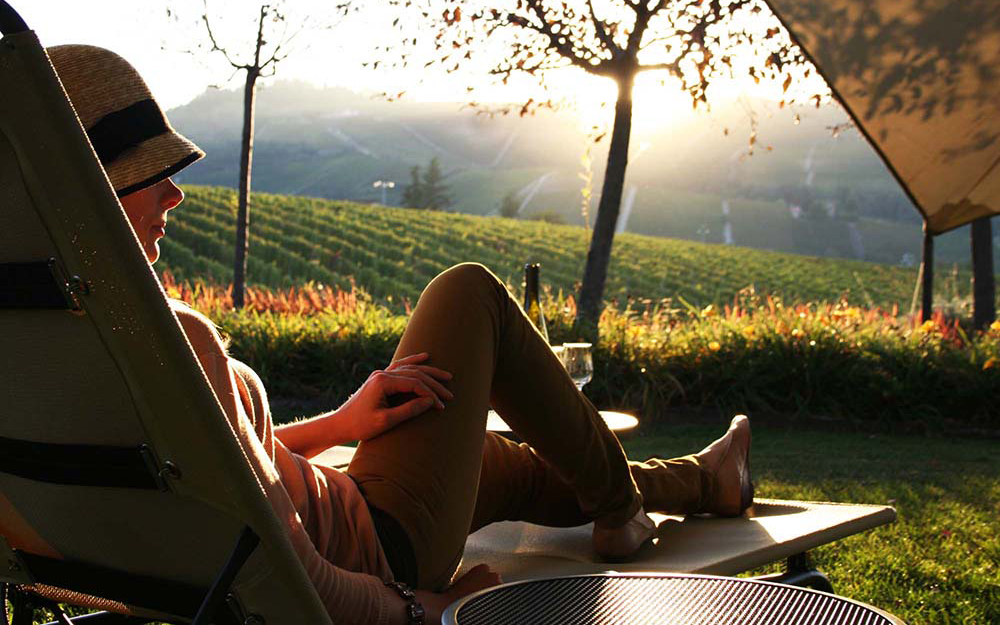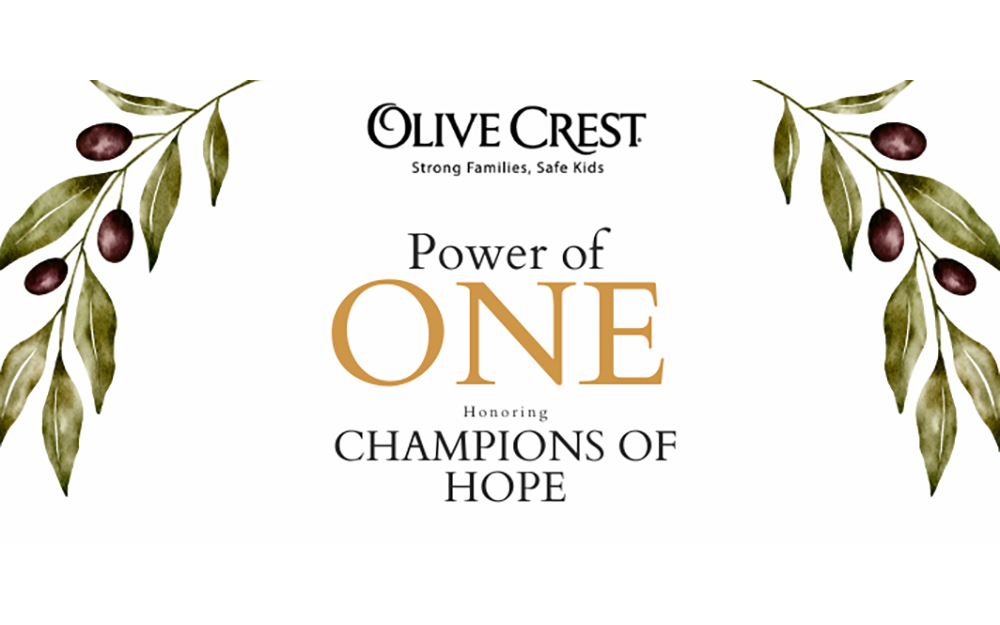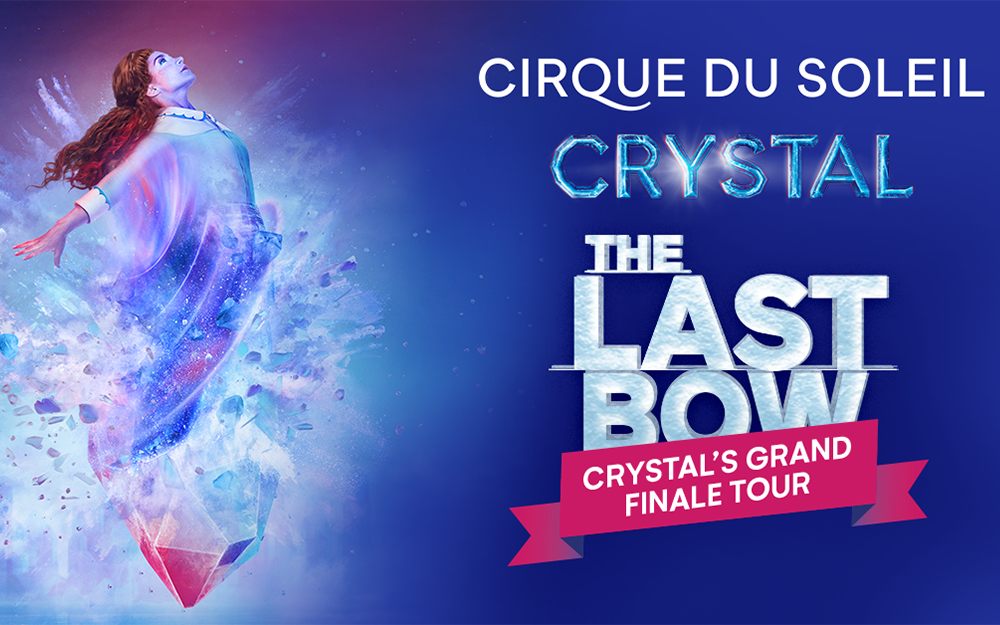
BY RICK RIOZZA
The Good Life of Wine and Relaxation—well, that would be a really loose translation. But the idea is there. And what else can we desert dwellers do but take it easy in this 115+ heat! Most invitingly, refreshing white Italian wine will be the subject of this article.
First, let’s still have some fun with the Italian saying, which is the common abbreviation of the line in the title above: “dolce far niente”. It’s the Italian phrase that culturally translates to: “the sweetness of doing nothing—carefree idleness”. It’s the laying on soft grass in the cool of the late morning gazing up at the leafy arms of a lovely tree; experiencing the soft tickle from your lover’s long quiet demure stare; the untroubled mindset whilst sitting in a trattoria observing about, when the waiter takes almost an hour getting back to you.
Many of you vino fans love and collect the wines from the Far Niente Napa Valley Estate Winery. Along with their sister wineries of Dolce, Nickel & Nickel & EnRoute, they surely produce world class high-end wines. The winery still exhibits perhaps the oldest intact bottle of a California wine in existence: 1886 Far Niente Sweet Muscat where the label features a sepia-tone line drawing of (what you’d expect) a hammock laden with grape clusters—believed to have been designed by artist Winslow Homer.
So pull up a soft chair—or, relax in a hammock, pour yourself a thirst-quenching vitalizing quaff and read on, that is, should you care to.
This week at the Palm Desert Total Wine & More store, I’ll be hosting the sold-out Wine Tour of Italy class, where we’ll be tasting through some very famous wine regions. So please allow me to share, what I hope, will enlighten and widen the vino interests of some lesser known refreshing Italian whites.
As most wine lovers already know, the beautiful mountains of Italy and surrounding seas create ideal conditions for growing grapes. It’s been said that, indeed, Italy is simply one long and fertile vineyard from the tip of the Alps to the toe of the peninsular boot that kicks into Sicily.
Let’s see if you recognize some of the major Italian white wine grapes: Pinot Grigio, Trebbiano, Garganega, Moscato, Cortese, Verdicchio, Fiano, Prosecco, Arneis, and Vermentino. How’d you do?
And then, there are the famous regions. Many of you know these as you have traveled through or visited parts of Italy. The Veneto region is Italy’s biggest producer of wine. From the Alpine border with Austria to the lagoons of Venice, and west to the romantic Romeo & Juliet hills of Verona, this region is home to sparkling Prosecco, crisp Pinot Grigio, and the soft Soave [Swah-Vay]. We often write of the first two, so let’s discuss the “Rico Soave” wine.
I know “Rico Suave” was the Puerto-Rican young salsa-crooner back in the day, but sometimes still in the bars around Verona, Americans will ask for “that Rico Soave wine”! The Veronese are not French—they won’t get condescending, as long as you enjoy it and pay for it, everyone’s happy.
The main grape here for Soave is the Garganega [gar-GONE-ne-gah] which provides for a dry light-bodied wine that speaks peach, honeydew, citrus zest, sweet marjoram with subtle note of saltiness. Sometimes there’s a smooth oily like richness that adds a little extra punch. It’s definitely the sexy choice to handle the sultry days.
Some people are saying Umbria is the new Tuscany—it isn’t. But it’s beautiful and less-expensive on its own. And the white wine of choice all around is Orvieto: it’s the town, region and name of the wine. Made mainly from the Trebbiano grape (which by the way—is used in France to produce Cognac, and is the grape for Balsamic vinegar). This wine comes in all styles (dry to sweet), but for the hot weather, we’re enjoying the drier Orvieto Classico which shows good acidity and fruity notes of green apples, citrus, figs, lime, melon, peaches and pears.
In the northwest region known as Piemonte, where the Winter Olympics were held in Torino, two tasty crisp whites are always on the table: The Cortese [kor-TAY-zay] di Gavi and the Arneis [arn-NAYZ]. The Cortese can simply be called Gavi [GAH-vee], or even, Gavi di Gavi, which is the best wine of that grape and fun to say and repeat with the usual Italo-hand gestures.
This wine is interestingly aromatic, like a Sauv Blanc, with notes of anise, apples, bananas, flowers, grapefruit, herbs, honey, limes, minerals, and nuts.
The Arneis grape and its Roero wine is similar to Gavi but with an especial nod to apples, almonds, apricots, and pears. Light-bodied with a touch viscid. Both are pool-party pleasers!
The Vees have it with the Verdicchio and Vermentino grapes. Verdicchio [vehr-DEEK-yoh] is one of the driest wines we’re listing here, along with sharp acidity. It definitely goes with the fruit of the sea palate, such as fish and shellfish, since it comes from the Le Marche [Lay- MARK-kay] region with its long Adriatic seacoast; similar to the Gavi aromas and flavors, but with a slightly bitter finish. Great food wine!
Vermentino is the supple wine of Sardinia. Medium to full-bodied, this wine covers the waterfront. Imagine a Sauv Blanc mixing it up with a Grüner Veltliner and chumming with a Pinot Grigio and Muscadet; another herby wine with lemon, minerals, nuts, pears, pepper, and tropical fruits. A perfect white while dining in the slow hot wind.
As I’ve written before, the fresh seared swordfish served in Siracusa, Sicily with white Grillo [GREEL-loh] wine that is complex and fresh, alongside tropical and fruity aromas and flavors: Delizioso!—saluti!









































